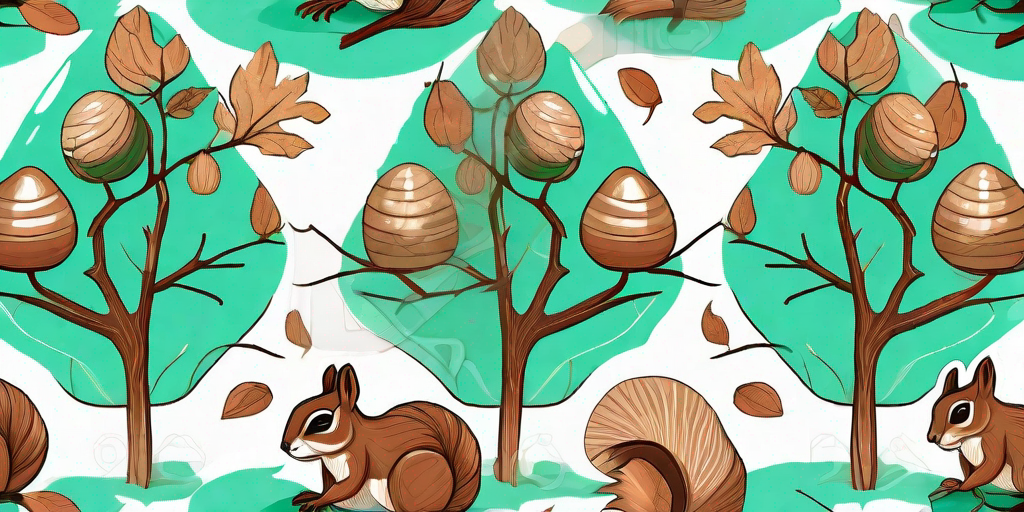
Welcome to the world of hazelnuts, a place where the trees are as fascinating as the nuts they produce. If you've ever found yourself munching on a handful of these delicious morsels, you may have wondered about their origin. Well, wonder no more! We're about to embark on a journey that will take us from the roots to the treetops of the hazelnut tree, and all the way to your snack bowl.
The Humble Beginnings of the Hazelnut Tree
Our story begins, as most good stories do, with a seed. The hazelnut tree, or Corylus avellana if you want to get scientific about it, starts life as a tiny nut. This nut, given the right conditions, will sprout into a sapling and eventually grow into a full-fledged tree. It's a process that takes time, patience, and a little bit of luck.
But where do these seeds come from? That's where the magic of pollination comes in. Hazelnut trees are monoecious, which means they have both male and female flowers on the same tree. The male flowers are the ones that produce pollen, while the female flowers are the ones that produce the nuts. It's a beautiful dance of nature that results in the delicious hazelnuts we all know and love.
From Seed to Tree
Once a hazelnut seed has been pollinated, it begins the process of germination. This is when the seed starts to sprout and grow into a tree. It's a slow process, but one that's crucial for the survival of the species.
The first thing that happens is that the seed absorbs water. This causes it to swell and break open, allowing the embryonic plant inside to start growing. The first part of the plant to emerge is the root, which will anchor the plant in the ground and start absorbing nutrients. Next comes the shoot, which will eventually become the trunk of the tree.
The Growth of the Tree
As the tree grows, it starts to produce leaves. These leaves are crucial for the tree's survival, as they are the main way it absorbs sunlight and converts it into energy through photosynthesis.
Over time, the tree will start to produce flowers. These flowers are the key to the tree's reproduction, as they are where the pollen and seeds are produced. Once the flowers have been pollinated, they will start to produce nuts, and the cycle will start all over again.
The Delicious Bounty of the Hazelnut Tree
Now that we've covered the life cycle of the hazelnut tree, let's talk about the main event: the nuts. Hazelnuts are a delicious and nutritious snack, packed full of protein, fiber, and healthy fats. They're also incredibly versatile, used in everything from spreads to baking to gourmet cooking.
But how do these nuts get from the tree to your snack bowl? That's where the process of harvesting comes in. Hazelnuts are typically harvested in the fall, when the nuts have fully matured and the husks have started to dry out and open up. The nuts are then collected, either by hand or with the help of machinery, and processed for consumption.
The Harvesting Process
Harvesting hazelnuts is a labor-intensive process, but one that's crucial for getting the nuts to market. The first step is to shake the trees to dislodge the nuts. This is typically done with a machine that grabs the trunk of the tree and shakes it vigorously.
Once the nuts have been dislodged, they are collected from the ground. This can be done by hand, but it's often done with a machine that sweeps the ground and collects the nuts. The nuts are then cleaned and sorted, ready for processing.
The Processing of Hazelnuts
Once the hazelnuts have been harvested, they need to be processed before they can be eaten. This involves removing the husks, drying the nuts, and then roasting them to bring out their flavor.
The nuts are then packaged and shipped to stores, where they can be purchased and enjoyed by consumers. It's a long journey from tree to snack bowl, but one that's well worth it for the delicious taste of hazelnuts.
FAQs about Hazelnut Trees and Their Bounty
- How long does it take for a hazelnut tree to produce nuts?
It can take anywhere from 2-5 years for a hazelnut tree to start producing nuts. The tree needs to reach a certain level of maturity before it can start producing flowers, which are the precursors to the nuts.
- Can I grow a hazelnut tree in my backyard?
Yes, you can! Hazelnut trees are relatively easy to grow and can thrive in a variety of climates. However, they do require a certain amount of care and attention, so make sure you're up for the challenge before you plant one.
- What are the health benefits of hazelnuts?
Hazelnuts are packed full of nutrients, including protein, fiber, and healthy fats. They're also a good source of vitamins and minerals, including vitamin E, thiamin, and magnesium.
Wrapping Up the Hazelnut Journey
So there you have it, the fascinating story of the hazelnut tree and its delicious bounty. From the humble beginnings of a seed to the delicious nuts that end up in your snack bowl, it's a journey that's as fascinating as it is tasty.
So next time you're munching on a handful of hazelnuts, take a moment to appreciate the journey they've been on. And maybe even consider planting a hazelnut tree of your own. After all, who wouldn't want a delicious and nutritious snack growing in their own backyard?











